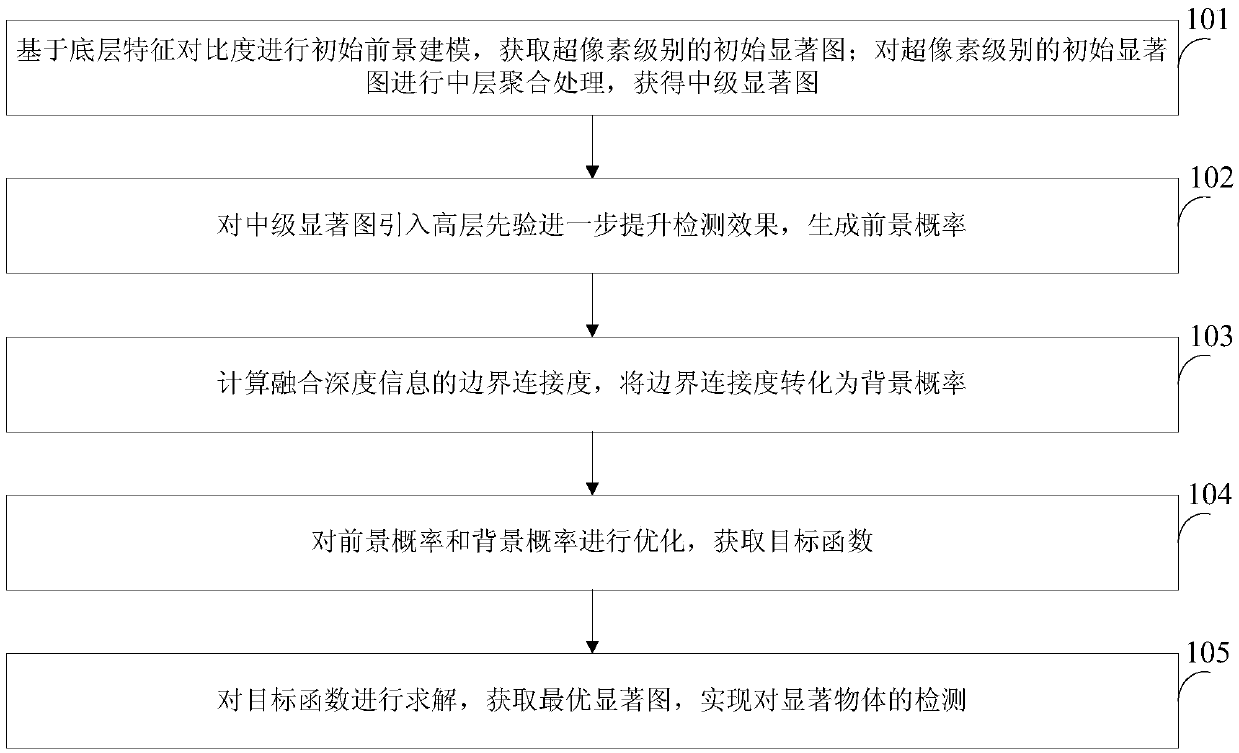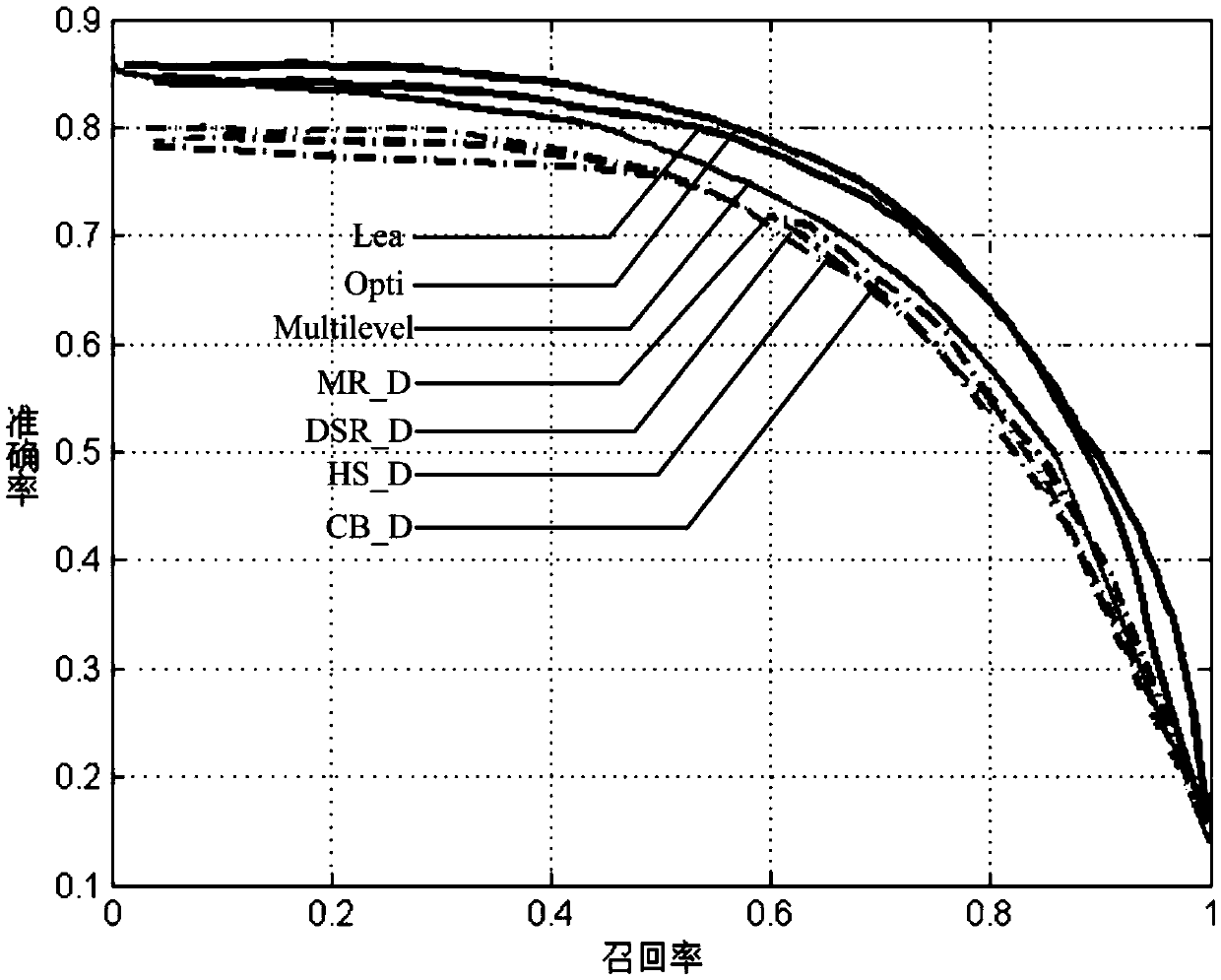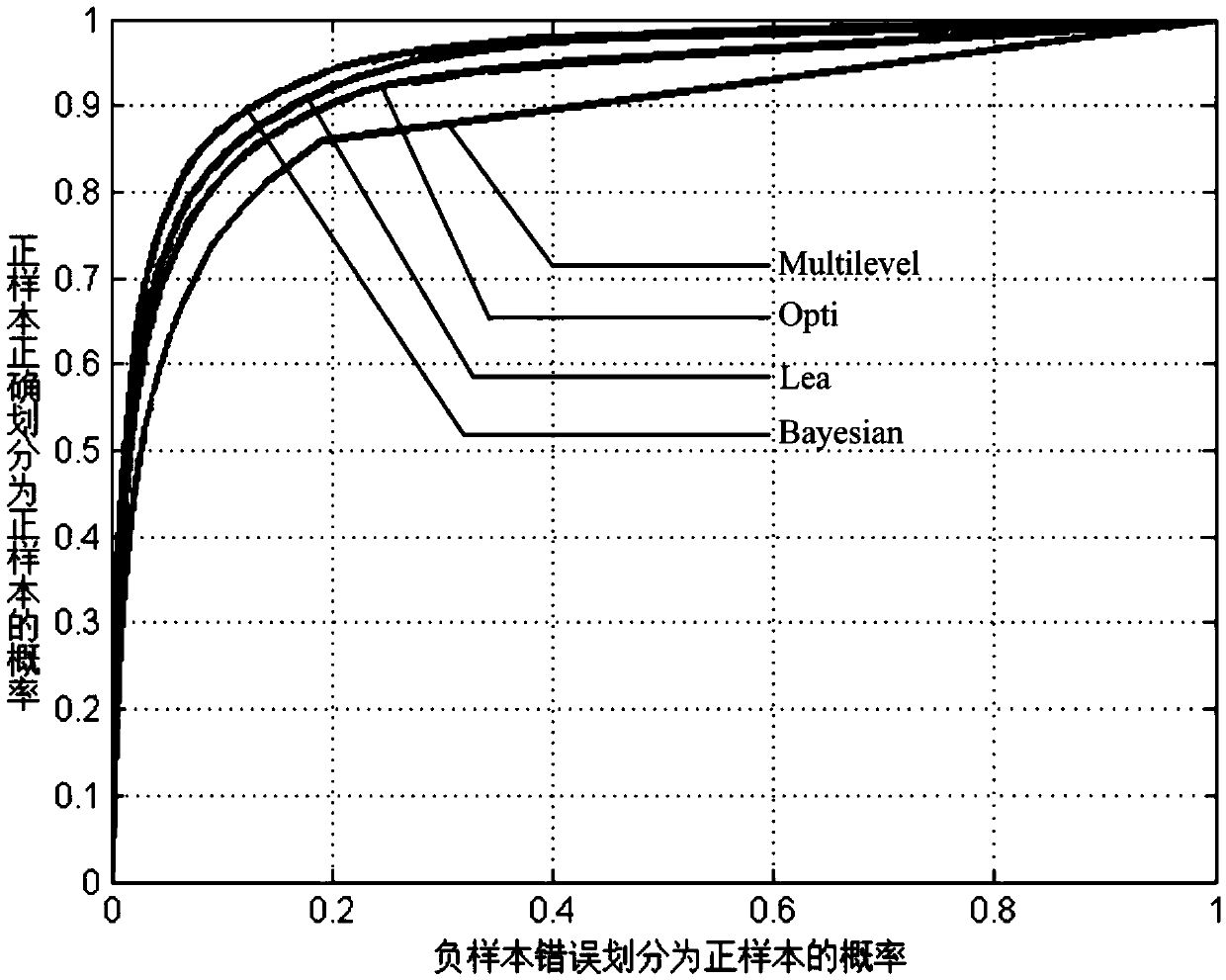RGB-D salient object detection method based on foreground and background optimization
An RGB-D, object detection technology, applied in image data processing, instrumentation, computing and other directions, can solve the problems of limited performance, RGB-D salient object detection algorithm has not yet been opened, and achieve high precision and high recall rate. Effect
- Summary
- Abstract
- Description
- Claims
- Application Information
AI Technical Summary
Problems solved by technology
Method used
Image
Examples
Embodiment 1
[0040] A RGB-D salient object detection method based on foreground and background optimization, see figure 1 , the salient object detection method includes the following steps: 101: performing initial foreground modeling based on the contrast of underlying features to obtain an initial saliency map at the superpixel level; performing middle-level aggregation processing on the initial saliency map at the superpixel level to obtain a middle-level saliency map;
[0041] 102: Introduce high-level priors to the intermediate saliency map to further improve the detection effect and generate foreground probability;
[0042] 103: Calculate the boundary connectivity of the fusion depth information, and convert the boundary connectivity into background probability;
[0043] 104: Optimizing the foreground probability and the background probability to obtain an objective function;
[0044] 105: Solve the objective function, obtain the optimal saliency map, and realize the detection of sal...
Embodiment 2
[0065] Combine below figure 1 1. The specific calculation formula introduces the scheme in embodiment 1, see the following description for details:
[0066] 201: For a given input RGB-D image, segment the RGB-D image into superpixels through an over-segmentation algorithm;
[0067] This step is specifically: express each pixel in the image as a six-dimensional feature vector, [L, a, b] is the color feature of the pixel in the color space of CIElab (a color model published by the International Commission on Illumination in 1976) , where the Lab mode consists of three channels, the first channel is lightness, namely "L". The "a" channel is from red to dark green; the "b" channel is from blue to yellow. [x, y, z] is the spatial coordinate of the pixel; then define the color distance d between two pixels (i, j) c and space distance d s ; Finally, the distance metric d between pixels is obtained.
[0068] in, d ...
Embodiment 3
[0137] This method mainly uses four indicators of accuracy (Precision), recall (Recall), area under the curve (AUC) and F-measure to quantitatively measure the effect of RGB-D salient object detection.
[0138] In statistics, the ROC curve refers to the receiver operating characteristic curve (Receiver Operating characteristic Curve), which describes the performance of a binary classifier system when the threshold is changed. In order to better measure the quality of the results expressed by the ROC curve, the embodiment of the present invention also uses the area under the curve (Area Under Curve, AUC). AUC is simply the ratio of the area of the lower right corner of the PR curve to the area of the entire rectangular coordinate axis plane. The PR (Precision-Recall) curve is another criterion for evaluating the performance of a binary classifier. For saliency detection, the accuracy is to calculate the number of pixels in the overlapping part of the salient objects in the...
PUM
 Login to View More
Login to View More Abstract
Description
Claims
Application Information
 Login to View More
Login to View More - R&D
- Intellectual Property
- Life Sciences
- Materials
- Tech Scout
- Unparalleled Data Quality
- Higher Quality Content
- 60% Fewer Hallucinations
Browse by: Latest US Patents, China's latest patents, Technical Efficacy Thesaurus, Application Domain, Technology Topic, Popular Technical Reports.
© 2025 PatSnap. All rights reserved.Legal|Privacy policy|Modern Slavery Act Transparency Statement|Sitemap|About US| Contact US: help@patsnap.com



